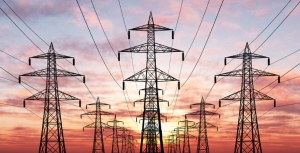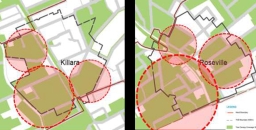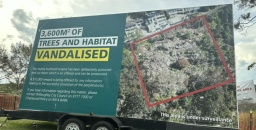Displaying items by tag: coal
Talking Energy, a Summer Barbeque Guide
Here are five common Australian energy myths and facts for the next barbeque when these questions about renewable energy are raised. The information comes from the Climate Council.
Myth 1: What happens when the sun doesn’t shine and the wind doesn’t blow?
Fact: Renewable energy and storage can provide electricity 24/7
Renewable electricity can power the economy through a mix of wind and solar energy, together with on-demand renewables (such as solar thermal, biomass or hydro power) and energy storage (such as pumped hydro or batteries). Improved energy efficiency and demand response, such as installing modern appliances and ensuring these appliances are not running when electricity demand is high, can also help make the grid more reliable.
Myth 2: Coal is reliable
Fact: Ageing coal generators are unreliable and vulnerable to heatwaves
The Australian Energy Market Operator (AEMO) has identified ageing coal power stations as a risk to reliable electricity supply. By 2030, most of Australia’s coal fired power stations will be over 40 years old. Once the coal fleet reaches this age, they become increasingly expensive to run, and increasingly unreliable particularly during heat waves.
This is a major management problem for AEMO. The aged Liddell power station in the Hunter Valley whose life the Turnbull government wants to extend has had multiple turbine breakdowns this summer. Each unit is large so a breakdown has a significant impact on the total power available.
Myth 3: Renewable energy is driving up electricity prices
Fact: Renewable energy is the cheapest form of new power
New renewable energy is driving down electricity prices by increasing electricity supply. Australia’s coal power stations are reaching the end of their lives and need replacing. Renewable power from wind and solar farms is the cheapest form of new power generation and is best suited to replace these old clunkers. More than 1.6 million Australian households are reducing their electricity bills with rooftop solar.
Myth 4: Renewable energy causes power outages
Fact: Most blackouts are caused by events affecting power lines
99% of all interruptions to power supply, including blackouts, are caused by events affecting power lines – not a lack of sufficient generation. Common causes of blackouts include fallen tree limbs, possums, vehicle impacts, bushfires, lightning strikes and storms. And to make matters worse, climate change – driven by the burning of coal, oil and gas for electricity – is worsening many extreme weather events such as storms, heatwaves and bushfire weather.
Myth 5: Australia lacks leadership on renewable energy
Fact: states and territories are leading on renewable energy in the absence of credible federal policy
While Australia waits for a credible climate and energy policy from the Australian government, states and territories continue to lead the charge on ramping up renewable energy and cutting pollution.
Finkel Review on the Electricity Market – What Happens Now?
The Chief Scientist, Dr Alan Finkel, was asked by the Council of Australian Governments (COAG) to undertake an independent review of the national electricity market (NEM) that:
- delivers on Australia’s emissions reduction commitments
- provides affordable electricity
- ensures a high level of security and reliability
This was complicated task that needed to take into account:
- the closure of ageing coal-fired power stations
- escalating extreme weather events (like heatwaves, bushfires and storms) driven by climate change that test the resilience of the system
- increasing gas prices
- rapidly declining costs of wind, solar and battery storage
It also had to be politically palatable for the federal and state governments.
The energy users, the general public and industry just want long-term policy certainty.
The major points made by the review and the Climate Council’s view are summarised below.
1. Emission Reductions
The minimum target for reducing emissions in the electricity sector should be a 28% emissions reduction below 2005 levels by 2030. While it places responsibility for more aspirational targets to 2030 and beyond with government(s), the review cautions higher targets could have ‘larger consequences for energy security’ and ‘implications should be re-examined’.
This target is consistent with the commitment made by Australia at the Paris Climate Change conference but the electricity sector needs to bear a greater share of the reduction. It is easier to reduce emissions in the electricity sector as many of the required technologies already exist and reductions in other sectors like transport and land use are harder to achieve. The Climate Change Authority, the government appointed advisory body, suggested that electricity emissions should reduce by two-thirds by 2030 and be zero by 2050.
2. Clean Energy Target
The Finkel Review proposes introducing a Clean Energy Target, which would effectively replace the current Renewable Energy Target from 2020. Gas and coal (with carbon capture and storage) would qualify under the Clean Energy Target, as well as renewable energy. The Clean Energy Target would set a certain target amount of new ‘clean’ electricity (expressed as GWh or % of electricity) based on the required emissions reductions for the electricity sector. The Finkel Review leaves the target baseline and emissions trajectory to 2030 and beyond for politicians to decide.
Technologies with lower emissions, like renewables, would receive higher benefits than those with higher emissions, like gas and coal (which would still be required to be below a set emissions intensity level to receive any benefit). New coal stations that do not meet the target can still be built without penalty, increasing the emissions reduction burden from ‘clean’ electricity.
The Clean Energy Council website explains this mechanism in more detail. Modelling undertaken for the Finkel Review (based on 28% emissions reduction for the electricity sector) indicates the Clean Energy Target mechanism (and an emissions intensity scheme) would result in lower costs to households and businesses compared with no action at all (business as usual). The modelling shows renewable power continuing to grow, up to 42% of electricity supply by 2030 (58% still comes from fossil fuels by then, with no further brown coal closures), in contrast to business as usual of 35% renewable electricity.
Power generated by renewable energy in 2030 under the proposed Clean Energy Target – at 42% – is far too low. Under the Clean Energy Target, electricity supply from large scale renewable energy would only increase 9% from 2020–30 (about the same increase as has occurred in the past ten years, a decade marked by significant climate and energy policy uncertainty).
3. Renewable Energy Reliability
The Finkel Review recommends a new requirement on new wind and solar power plants to provide a certain level of ‘dispatchable’ capacity (this was called a Generator Reliability Obligation). Dispatchable capacity is electricity that is available on call, as and when needed. New wind and solar would be required to provide a certain amount of battery storage or gas generation as determined by energy market bodies so that power is available with certainty, for example, when the wind isn’t blowing and other sources cannot provide sufficient power.
There was no equivalent requirement placed on new, or existing ageing gas or coal generation, despite the failure rate of ageing power stations increasing. For instance, in early February 2017, a severe heatwave across much of Australia’s south east and interior caused supply issues for the South Australian and NSW energy systems at a time of peak demand. In NSW around 3000 MW of coal and gas power capacity was not available when needed in the heatwave. High power users in industry were required to scale back production at great cost.
4. Future of Coal
The Finkel Review recommendations focus on incentives to encourage new lower emissions power plants to be built, rather than phasing out or penalising polluting coal and gas plants. So the approach is intended to bring on new renewables without incentivising the phase out of existing polluting coal generators. Coal generation would continue to provide over 50% of Australia’s electricity by 2030 and 24% by 2050.
Coal should be phased out much more quickly. Australia’s coal-fired power stations are old, and polluting by world standards. The Finkel Review acknowledges that by 2035:
… approximately 68% of the current coal generating plants will have reached 50 years of age.
Its modelling shows most still operating at 2030 and some even by 2050. The review even considers it a ‘benefit’ for these old, polluting coal plants to continue operating.
The key recommendation for coal-fired power is a new requirement for power plants to provide three years notice before closing. A schedule for the closure of aged plants should have been established years ago.
5. Future of Gas
The Finkel Review provides for a continuing role for gas power generation despites the issues with methane emissions and local environmental impacts of coal seam gas extraction. It acknowledges gas prices (and, as a result gas power prices) will continue to rise in future due to the demands of liquefied natural gas exports from Queensland, and the increasing price of producing gas from unconventional gas fields.
At current gas market conditions, it observes that battery storage may be more cost effective than gas in providing security and reliability in the near future. However, the Finkel Review paradoxically urges government and industry to prioritise gas exploration and development.
See STEP Matters Issue 190 for more details on the issues with gas powered electricity.
Government Response
The Turnbull government has supported all the recommendations except the Clean Energy Target. They can’t get away from the vested interests of the coal industry. There are even rumours that they would consider providing financial support for a new ‘clean’ coal-fired power plant.
Coal-fired power is on the way out, globally, and in Australia. Clean coal is very expensive, if not technically impossible. But using public funds to prop-up this 19th century technology would lock in climate-destroying pollution and higher power prices for decades to come.
The Turnbull government is out of step with state/territory and local governments. State and territory governments are already on track to deliver the Clean Energy Target on their own:
- Victoria, Queensland, Northern Territory and South Australia are set to generate 40–50% renewable energy by 2030
- Tasmania is already running off 90% renewable energy
- ACT has contracted enough renewable energy to meet all its electricity needs by 2020
The states are setting strong targets that will help Australia reach net zero emissions by (and ideally before) 2050 in order to protect Australians from worsening climate impacts.
South Australia is about to get a 150 MW solar thermal power plant that will meet 5% of the state’s power needs. The 150 MW plant near Port Augusta is expected to be operational by 2020 and will power all the South Australian government's electricity needs. The plant uses the sun as a source of heat that is reflected by mirrors onto a tower containing molten salt that is used to create steam that drives a turbine. It is expected that more of these plants will be built.
Several local governments including Ku-ring-gai, Willoughby and North Sydney, have signed up with the City Powers Partnership set up by the Climate Council. Local councils who join the partnership pledge to take five key actions across renewable energy, efficiency, transport and working together. The partnership acts as a support network for sharing expert information and establishing joint projects.
The information in this article is sourced from the Climate Council’s commentary called Unpacking the Finkel Review.
Gas is not the Solution for Transitioning our Energy Supply away from Coal
Following the serious power blackouts that occurred in South Australia and near misses in other states, gas-fired power stations have been touted as the one of the best means to transitioning away from our aging coal-fired electricity generation system. This is short-term, simplistic thinking that will be detrimental in the longer term, and the Climate Council has just released a report explaining why. The report is called Pollution and Price: The Cost of Investing in Gas.
The Climate Council is the crowd funded organisation led by Tim Flannery that replaced the Climate Commission that was abolished by the Abbott Government shortly after they came into power. They aim to provide independent, expert information on climate change issues.
Here is a brief summary of the main findings.
Use of gas does not reduce emissions sufficiently
Australia must reduce greenhouse gas emissions down to zero by 2050 in-line with international goals. Fossil fuels (coal, oil and gas) all produce greenhouse gas emissions driving climate change. Limiting global temperature rise requires that they are all phased out. Gas is not sufficiently less polluting than coal to garner any climate benefit.
Greenhouse gas emissions are produced both from gas power stations and gas production (for instance, methane from gas leaks). Methane is 86 times more potent as a greenhouse gas than carbon dioxide over a
20-year period.
New gas power plants are less polluting than coal. However, when the entire supply chain of gas production is considered, gas is not significantly less polluting than coal. Current levels of reliance on gas power in Australia must be reduced to play our role in limiting global temperature below 2°C. Expanding gas usage is inconsistent with tackling climate change as it locks in emissions for decades into the future.
Greater reliance on gas will drive higher power prices
Australia’s liquefied natural gas exports are pushing up the price of gas power as domestic gas prices are now inextricably linked to world market prices for oil. This will continue into the foreseeable future.
The most economic and accessible reserves are now being exported. Further gas expansion will drive increased reliance on unconventional gas, which is expensive. Reliance on gas power is also driving power price spikes, particularly in South Australia, Queensland and increasingly in New South Wales, due to lack of competition among gas power companies.
Investment in new gas plants is financially risky
The large increases in future gas prices and volatility resulting from liquefied natural gas exports together with domestic gas prices controlled by relatively few producers, make investments in new power plants using gas very risky. New gas power plants would rely on ageing gas production infrastructure (e.g. processing plants and high pressure pipelines) that is increasingly vulnerable to failure. Costs of updating this infrastructure and accounting for methane leakage must be factored into policy and investment decisions.
New gas infrastructure locks in carbon emissions for decades. Future regulations may impose higher costs or stricter limits on emissions in the future, impacting on the economic viability of gas production and electricity generation, stranding investments.
Significant development of new gas plants is unfeasible without a massive expansion of unconventional gas
The sheer volume of gas required, the cost, the lock in of long-term emissions, environmental risks and lack of support from communities near gas wells makes this unrealistic. Currently the emissions from unconventional gas in Australia are unknown due to a lack of measurement and data. This presents a long term carbon risk to investors as high emissions fossil fuel infrastructure faces the possibility of future regulation due to climate change. Development of new unconventional gas is entirely out of step with meeting the Australian government’s climate change goals.
Renewable energy can provide a secure, affordable alternative to new fossil fuels
New renewable energy is cost competitive with new gas. The cost of renewable power and storage, particularly solar, wind and batteries, continues to fall and has no associated fuel costs. This contrasts with rising and volatile gas prices.
Technologies such as solar thermal, hydro and biomass plants can meet demand for electricity at all times of the day as well as meeting technical requirements for grid stability. Combining these technologies with wind, solar PV, and large-scale energy storage, can meet electricity demand round-the-clock. Using existing gas-fired generators and supply infrastructure prudentially to complement wind and solar power while scaling up a range of renewable energy technologies, energy storage and energy efficiency measures could deliver a limited benefit, provided the end goal is phasing out the use of all fossil fuels as quickly as possible.
Conclusion
The report concludes that Australia should not provide policy support for new gas power plants or gas supply infrastructure. Existing gas plants should be thought of as a short-term, expensive, emergency backup as renewable energy and storage is rapidly scaled up.














